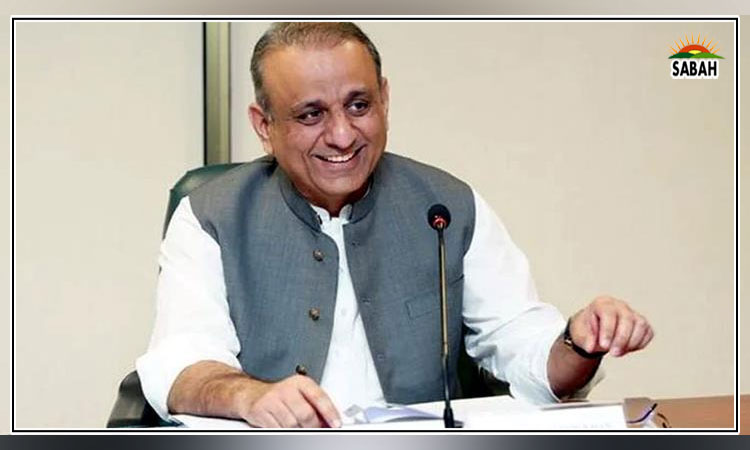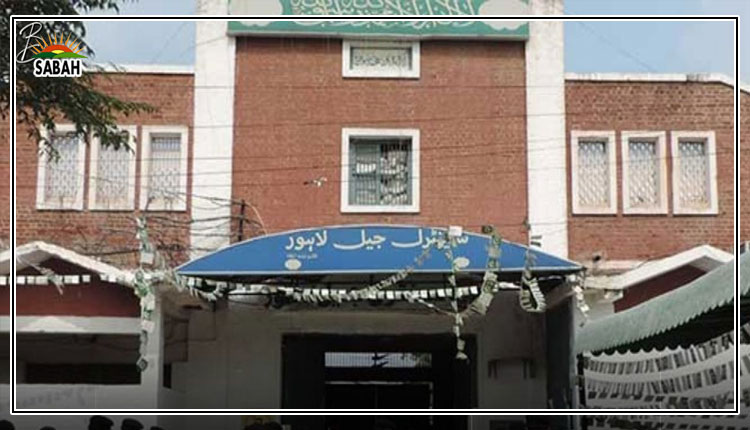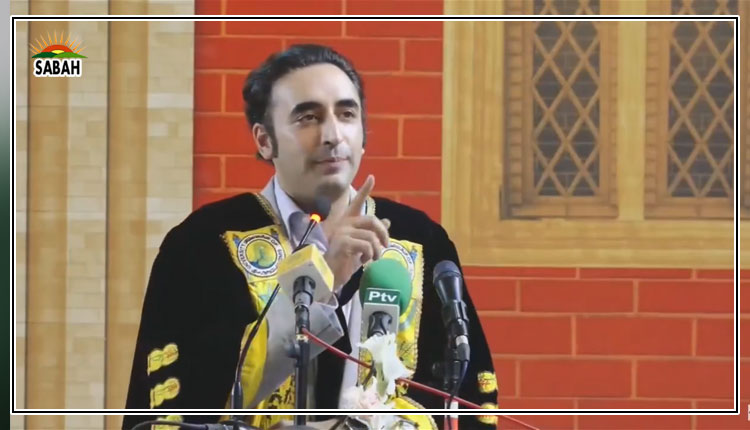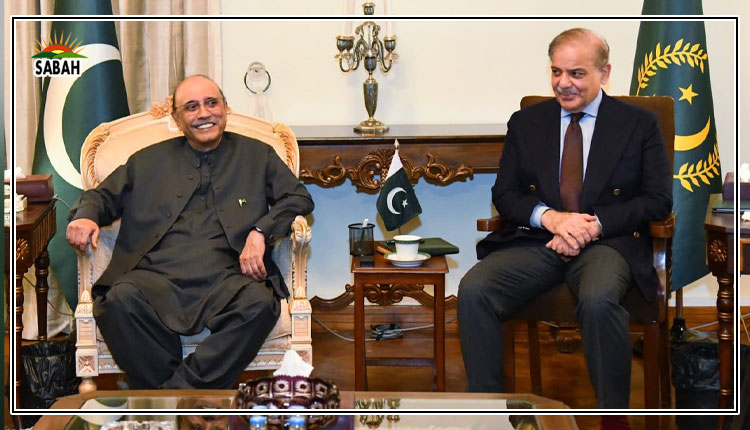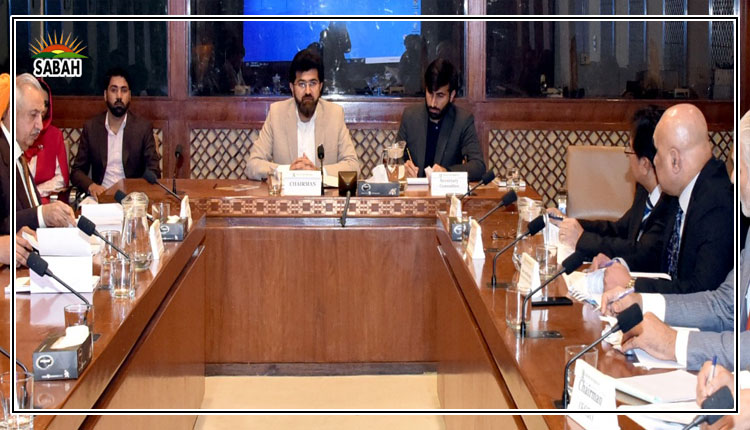A decade of CPEC…Dr Murad Ali
In recent times, hardly has any other strategy or initiative gained any such global limelight than Chinese President Xi Jinpings Belt and Road Initiative (BRI). The USs Build Back Better World (B3W)/Partnership for Global Infrastructure Investment (PGII) and the EU Global Gateway are concrete instances of how the world has responded to counter the rising global role and influence of China.
There is hardly a policy think tank or academic institute across the globe that has remained disinterested in the enterprise. On account of massive enthusiasm for the subject, one study asserts that in China alone the BRI-related publications increased by nearly 30,000 in 2018. To a large extent, similar has been the case with one artery of the BRI in Pakistan the China-Pakistan Economic Corridor (CPEC), which is one of the most discussed subjects in universities, think tanks and in business circles and the media.
In her study The Words of the Belt and Road Initiative: A Chinese Discourse for the World?, C M Costa has appropriately stated that the Chinese initiative has turned into a global hot academic and media topic. One study claims that in China alone, the BRI-related publications increased by nearly 30,000 in 2018, including probably media reports otherwise these figures seem quite exaggerated. What I want to emphasize here is that the BRI (globally) and CPEC (to some extent globally but mostly regionally or locally) have remained at the centre of attention, although the intensity of interest has been waning of late.
Both Pakistan and China have identified the benefits of the corridor and its achievements to date and hence have decided to celebrate a decade of CPEC this month, including a planned international conference in Islamabad. I am in Germany on a short research fellowship, working on my book on BRI/CPEC at the German Institute of Development and Sustainability (IDOS) in Bonn, thanks to my researcher collaborator Professor Stephan Klingebiel, who is an eminent expert in the field of transnational development cooperation.
I participated in a workshop 10 years of BRI learning processes, policy adaptations and managing complexity, organized jointly by University of Bonn and Academy of International Affairs of North Rhine-Westphalia (NRW). While a lot of issues were discussed during the seminar where experts and Sinologists from several countries participated, including from Taiwan and mainland China, there was also this feeling that the West is on the path of de-risking a mere euphemistic impression and a soft version of decoupling.
One PhD scholar showed how Sino-EU cooperation in the area of space mission and space technology has come to halt during the last several years. In addition to space technology, there are several other areas such AI, biotechnology and information technology where the West has been on the course of de-risking (read: decoupling). Sad for the growth of science and technology and for the greater benefit of humanity indeed.
The problem with the US and by extension the larger Western world is that it has been looking at the BRI primarily from geopolitical lenses. In his book, The Avoidable War: The Dangers of a Catastrophic Conflict between the US and Xi Jinping’s China, former prime minister of Australia Kevin Rudd argues that an armed conflict between China and the United States over the next decade, while not yet probable, has become a real possibility. He is not alone to predict such a catastrophic scenario of the Sino-US bilateral ties, there is a long list of American writers. During the seminar, a US-based Chinese professor told me that you will rarely come across such warmongering from Chinese leadership and people in academia. The US is always obsessed with the idea of war, he stated.
And perhaps, no other writer can sum it better than the great Kishore Mahbubani, Singaporean diplomat and author of several books, whose parents lived and grew up in pre-partition Pakistan in Hyderabad. In his book The Asian 21st Century, he asserts: The Chinese have, for instance, avoided unnecessary wars. Unlike the United States, which is blessed with two nonthreatening neighbors in Canada and Mexico, China has difficult relations with a number of strong, nationalistic neighbors, including India, Japan, South Korea, and Vietnam. Quite remarkably, of the five permanent members of the UN Security Council (China, France, Russia, the United States, and the United Kingdom), China is the only one among them that has not fired a single military shot across its border in 30 yearsBy contrast, even during the relatively peaceful Obama Administration, the American military dropped 26 thousand bombs on seven countries in a single year.
To be certain, CPEC is not a hollow narrative or a mere slogan as it has real and tangible impacts. Recently, Chinas Foreign Ministry Spokesperson Wang Wenbin stated in a press conference in Beijing that CPEC has attracted about $24.5 billion since it was initiated. He added that CPEC projects have generated about 192,000 jobs, added 6,000 MW of power, constructed 510 km highways, and expanded the national power transmission network by 886 km. Several government documents corroborate such statements. Also, among the six economic corridors envisioned under the BRI, CPEC has made tremendous progress as numerous projects worth $25 billion have been executed in energy, infrastructure, and industrial sectors.
According to the Pakistan Economic Survey 2021-22, out of the total 56 projects currently underway, 26 projects worth approximately US$17 billion have been completed so far and 30 projects worth US$8.5 billion are under construction. Similarly, another 36 projects of about $28.4 billion are stated to be in the pipeline. However, there is also a feeling that China faces challenges in the realization of the BRI as the multiple countries along the network have different economic, political, institutional and infrastructural conditions and agendas.
In the case of CPEC, no doubt substantial progress has been made as projects have been completed across the length and breadth of Pakistan, including the first metro line in Lahore. Unfortunately, in contrast to our only Orange Metro Line in Lahore, 15 Indian cities have metro line infrastructure.
Pakistan has not made any progress in this area, with or without CPEC. Along with the Karachi Circular Railway (KCR) project and other planned mass transit systems in big cities, we have prioritized roads and motorized infrastructure and the fate of several projects is still in limbo. For example, Peshawar-Karachi railway line, known as Main Line-1 (ML-1). It must be mentioned that the project had been designated a strategic project by the 6th JCC meeting held in Beijing. It was stated that with completion, travel time and cost of transportation would be reduced as trains would ply at the speed of 160 km per hour. Despite several promises, there was no headway on ML-1 during the 11th JCC meeting, and the project cost has phenomenally increased with the delay. There were no words about ML-1 during the 10th JCC meeting held in September 2021, the last such summit convened via videoconference by the previous PTI-led government. Another conspicuous example is that of the Diamer-Bhasha Dam.
In sum, there is plenty to celebrate the decade of CPEC as without any doubt both governments, despite security and political challenges as well as the Covid pandemic, have made significant progress. There is a need for prior coordination, meticulous planning, and no need to rush to projects which have political capital but are financially unsustainable. Beijing and Islamabad have been working in the field of defence and security for decades and they should not find challenges in clear communication. For CPEC implementation, the formation of institutional arrangements such Joint Working Groups (JWGs) and JCC are innovative approaches for increased consultations and coordination.
That said, both countries need to plan ahead — and plan well. In contrast to the ML-1 case in Pakistan, the development and upgradation of railways has been a key element of the BRI in several participating countries. For example, in Ethiopia, the transboundary railway between Addis Ababa and Djibouti is considered to be a prominent BRI project in the region with significant dividend. According to one study, the railway improves efficiency by reducing the amount of time required to import goods to central Ethiopia from three days to half a day. Similarly, in Cambodia, Chinese investment in transport infrastructure has significantly reduced travel time as the mobility of local people and goods have increased domestically as well as between Cambodia and neighbouring countries through better transport networks.
The Thai case is another example which shows how to make the BRI more economically viable without venturing into the risks of debt-traps by ensuring the BRI project fits in with the countrys priorities in alignment and delivery. For the successful fruition of CPEC, the onus is on Pakistan to keep its house in order. For petty political gains, our politicians do not hesitate to drag China in the countrys domestic politics. Such practices must not be repeated. Even if there are reservations regarding the financial aspects of certain projects, there are proper forums for that rather than to resort to mudslinging.
To make the initiative truly a game-changer, Pakistan must revisit its political and governance model — and of course its foreign policy priorities. With the existing mode of governance plagued by corruption, ineffective institutions, political instability, elite capture and mismanagement at different tiers of the government and sycophancy rather than meritocracy, it seems a daydream to see this country have a flourishing economy.
Courtesy The News





